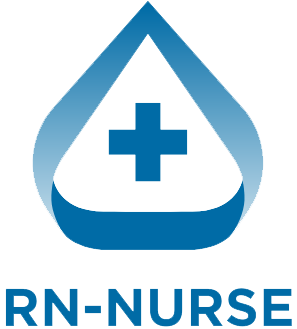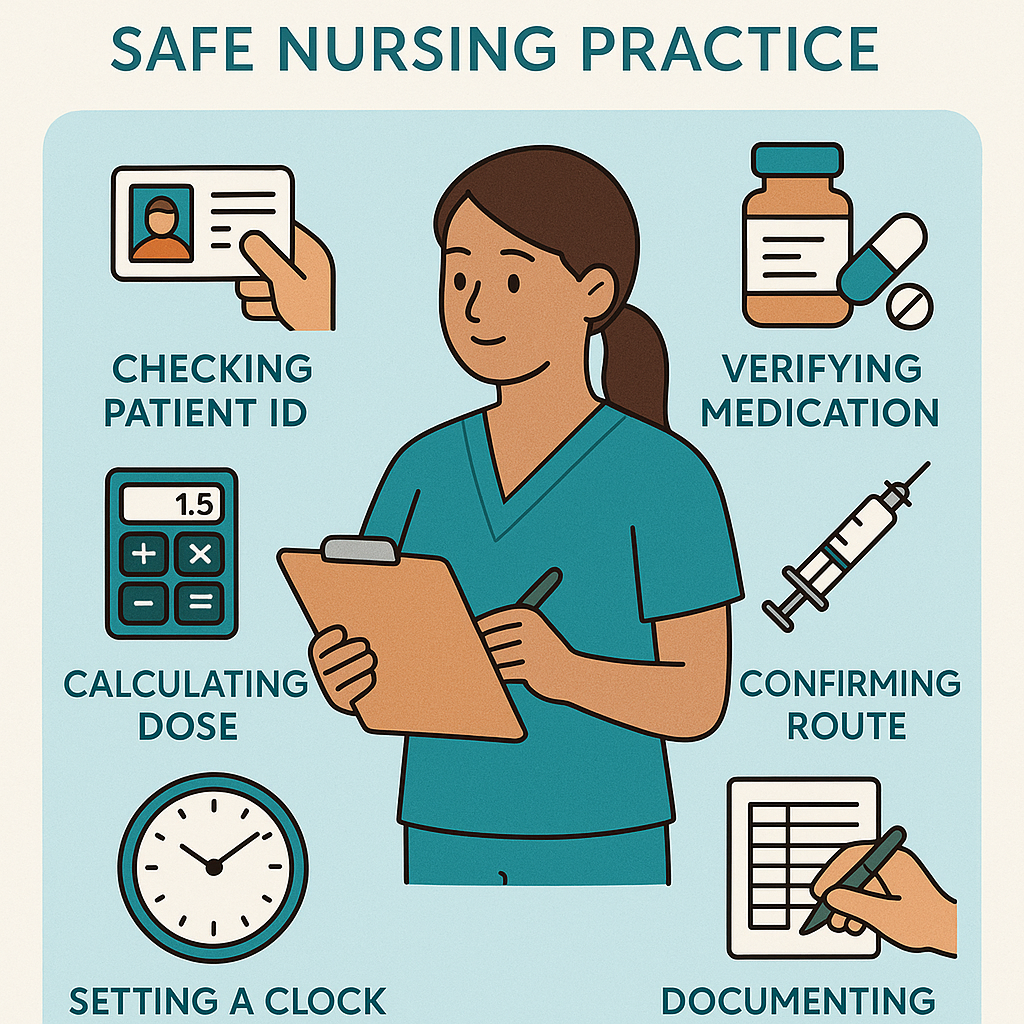Safe medication administration is one of the most important responsibilities for every registered nurse. Whether you’re a student studying for the NCLEX, an experienced RN nurse, or working through a nursing bundle on safe practice, mastering the 6 Rights is non-negotiable.
This quick guide will help you understand each right, why it matters, and how to apply it daily in your nursing career.
💊 Why Medication Safety Matters
Giving medications correctly prevents patient harm, medication errors, and potential lawsuits. Even small mistakes can cause severe side effects or worse. Following the 6 Rights reduces risks and keeps your practice safe and professional.
🗂️ The 6 Rights of Medication Administration
1️⃣ Right Patient
- Always check two patient identifiers (like name and date of birth).
- Use the patient’s ID band and confirm verbally if possible.
- Never rely on room numbers alone.
Tip for NCLEX: Patient safety questions often test your knowledge of ID checks — memorize this step!
2️⃣ Right Medication
- Compare the medication label with the medication administration record (MAR) at least 3 times:
- When you take it out
- Before preparing it
- Before giving it
- Watch out for look-alike or sound-alike drugs — common NCLEX topic!
3️⃣ Right Dose
- Double-check the dose ordered against what you have.
- Use a calculator for tricky conversions (like mg to mcg).
- If unsure, ask another nurse or the pharmacist — never guess.
NCLEX tip: Be prepared to calculate pediatric or weight-based doses.
4️⃣ Right Route
- Confirm how the medication should be given: oral, IV, IM, subcutaneous, topical, etc.
- Make sure the patient can take the med by that route (e.g., can they swallow pills?).
- Check for compatibility if giving multiple IV meds.
5️⃣ Right Time
- Give the medication at the correct time: some meds need to be on an empty stomach, others at mealtimes.
- Follow hospital policy on acceptable time windows (often 30 minutes before or after the scheduled time).
- Document any delays or reasons for withholding a dose.
6️⃣ Right Documentation
- Document immediately after giving the medication — not before!
- Record the drug name, dose, route, time, and any observations (like pain level for pain meds).
- Note any side effects or reactions.
📌 Bonus Tips for NCLEX & Real-World Nursing
✔️ Stay organized: Use a checklist or cheat sheet from your nursing bundle to remember the steps.
✔️ Communicate clearly: If something doesn’t look right, clarify with the prescriber.
✔️ Educate your patient: Explain what you’re giving and why — it builds trust and helps catch mistakes.
✔️ Report errors immediately: If you make a mistake, follow your facility’s policy and inform your charge nurse or supervisor.
🎓 How This Helps You Pass the NCLEX
Questions about medication administration come up in almost every NCLEX exam. Mastering the 6 Rights makes you confident during clinicals and testing.
Use your nursing bundle resources to practice common med math, dosage calculations, and safety scenarios.
✅ Key Takeaway
Knowing the 6 Rights is not just about passing your NCLEX — it’s a daily practice every nurse and registered nurse (RN) uses to protect patients.
Safe meds. Safe patients. Safe nurse.

